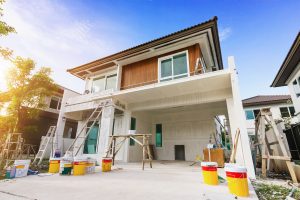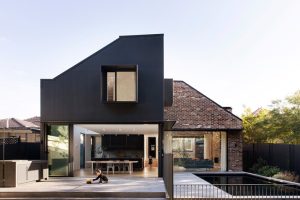What Costs the Most When Renovating a House?
Renovating a house can be an exciting and rewarding endeavor, but it’s important to carefully plan and budget for the project. Whether you’re considering a minor facelift or a complete overhaul, it’s crucial to understand the potential costs involved. In this article, we will explore the key factors that can contribute to the overall cost of a house renovation. What cost the most when renovating a house?

Kitchen Remodeling
When it comes to renovating a house, the kitchen is often the most expensive room to remodel. The kitchen is not only a functional space but also a central gathering place for families and friends. As a result, homeowners often invest heavily in updating their kitchen to create a stylish and efficient space.
The cost of a kitchen renovation can vary greatly depending on the scope of the project. Factors that influence the cost include the size of the kitchen, the quality of materials used, and the complexity of the design. Common expenses associated with kitchen remodeling include:
- Cabinetry: High-quality cabinets can significantly impact the cost of a kitchen renovation. Custom-made cabinets tend to be more expensive than pre-fabricated ones.
- Countertops: Materials such as granite, quartz, and marble can be quite costly but offer durability and aesthetic appeal.
- Appliances: Upgrading to energy-efficient appliances can add to the overall cost but may result in long-term savings on utility bills.
- Lighting and fixtures: Installing new lighting fixtures and plumbing fixtures can enhance the ambiance and functionality of the kitchen.
Bathroom Upgrades
Another area of the house that often commands a significant budget during renovations is the bathroom. Bathrooms are essential spaces that can greatly impact a home’s value and appeal. Upgrading a bathroom typically involves various expenses, including:
- Fixtures and fittings: Upgrading the sink, toilet, shower, and bathtub can significantly contribute to the cost of a bathroom renovation. Opting for high-quality fixtures can enhance the overall aesthetics and functionality.
- Tiling and flooring: The choice of tiles and flooring materials can range from affordable options to more luxurious ones. Factors such as size, design, and material quality will affect the overall cost.
- Plumbing and electrical work: Relocating plumbing and electrical systems can add to the expenses of a bathroom renovation, especially if there is a need to reroute pipes or wires.
- Storage and cabinetry: Built-in storage solutions and vanities can provide added functionality and storage space but can also contribute to the overall cost.
Structural Changes
When undertaking a major house renovation, structural changes may be necessary to achieve the desired outcome. These changes involve altering the layout or footprint of the house, which can be a complex and costly undertaking. Some common structural changes include:
- Removing or adding walls: Knocking down walls to create an open floor plan or adding walls to divide spaces can involve additional expenses for structural engineers, permits, and materials.
- Foundation work: If there are issues with the foundation, repairs or reinforcement may be necessary, which can be a significant expense.
- Roofing: Replacing or repairing the roof is another aspect of structural changes that can incur substantial costs. Whether it’s replacing damaged shingles or opting for a complete roof overhaul, roofing expenses should be factored into the renovation budget.
- Windows and doors: Upgrading or replacing windows and doors can enhance energy efficiency, security, and aesthetics. However, the cost of high-quality windows and doors can be significant.
- HVAC systems: If the heating, ventilation, and air conditioning (HVAC) system is outdated or inefficient, upgrading to a new system can improve comfort and energy efficiency. HVAC installations can be a major expense during a renovation.
Additional Considerations
While the kitchen, bathroom, and structural changes tend to be the most significant contributors to renovation costs, there are other factors to consider when estimating the overall expenses:
- Permits and professional fees: Obtaining the necessary permits and hiring professionals such as architects, designers, and contractors can add to the total cost. It’s essential to research local regulations and factor in these fees during the planning phase.
- Unexpected issues: Renovations often uncover hidden problems, such as outdated wiring, plumbing issues, or structural damage. Budgeting for unforeseen expenses is crucial to avoid financial strain during the renovation process.
- Quality of materials: Opting for high-quality materials may result in a higher upfront cost but can provide long-term durability and satisfaction. It’s important to strike a balance between budget and quality when making material choices.
- Labor costs: The cost of labor can vary depending on location, complexity of the project, and the specific tradespeople involved. Obtaining multiple quotes and thoroughly researching contractors can help ensure a fair price for labor.
In Conclusion
Renovating a house can be a significant financial investment, and understanding the factors that contribute to the overall cost is essential for successful planning. While the specific expenses may vary depending on the project’s scope and location, kitchen remodeling, bathroom upgrades, and structural changes typically represent the largest portion of a renovation budget.
By carefully considering the costs associated with these areas and factoring in additional considerations like permits, unexpected issues, material quality, and labor, homeowners can create a realistic budget that aligns with their renovation goals. For renovations in the sunshine coast see here.

Remember, every renovation project is unique, and it’s crucial to conduct thorough research, seek professional advice, and obtain multiple quotes to ensure an accurate estimation of costs. With proper planning and budgeting, homeowners can transform their house into a beautiful and functional space that suits their needs and preferences.

